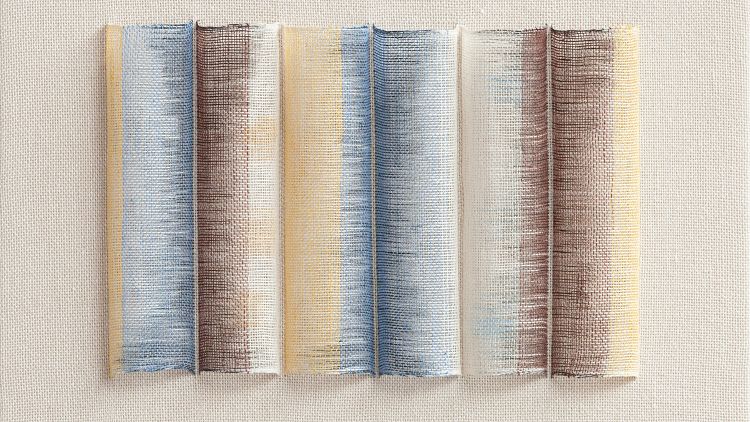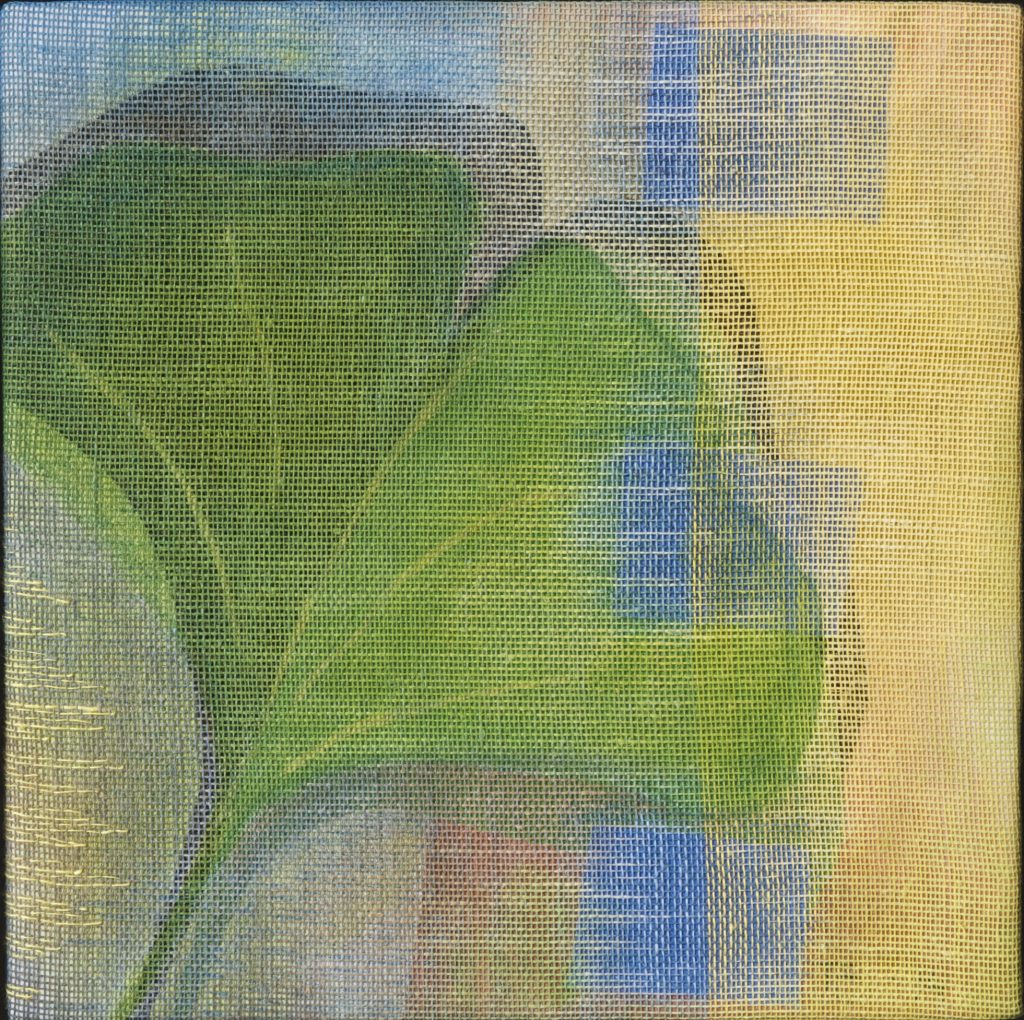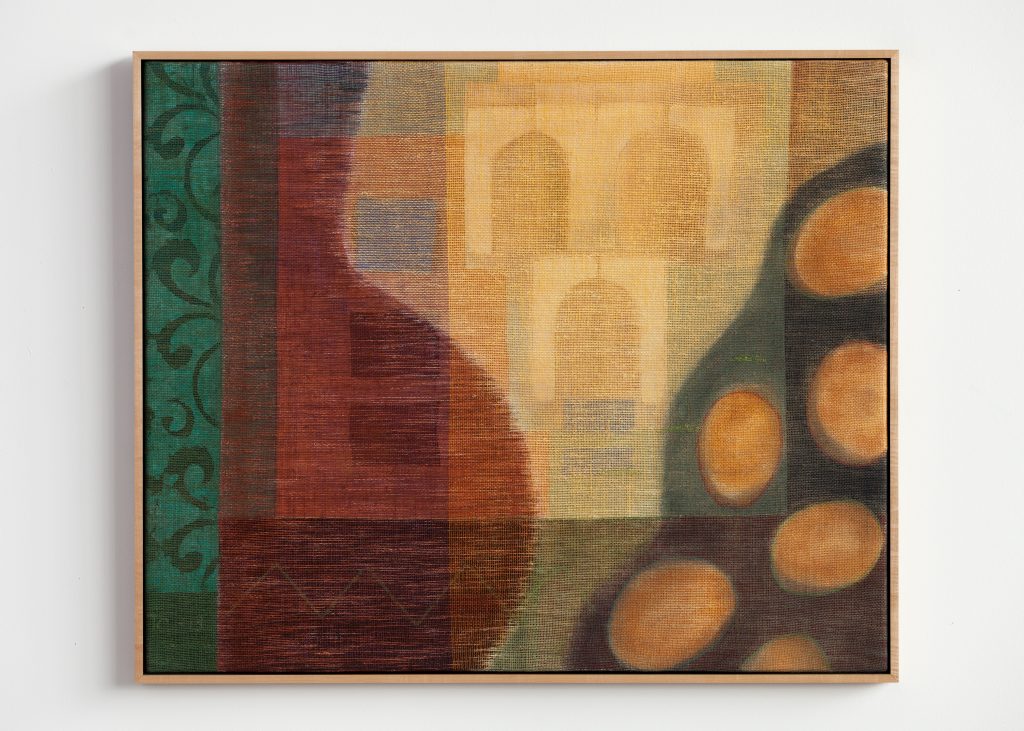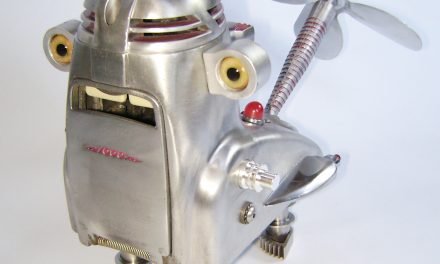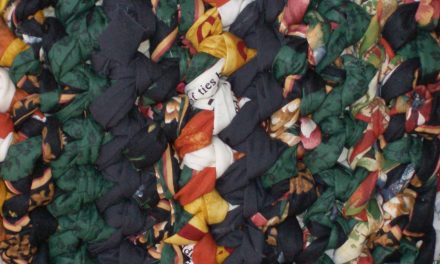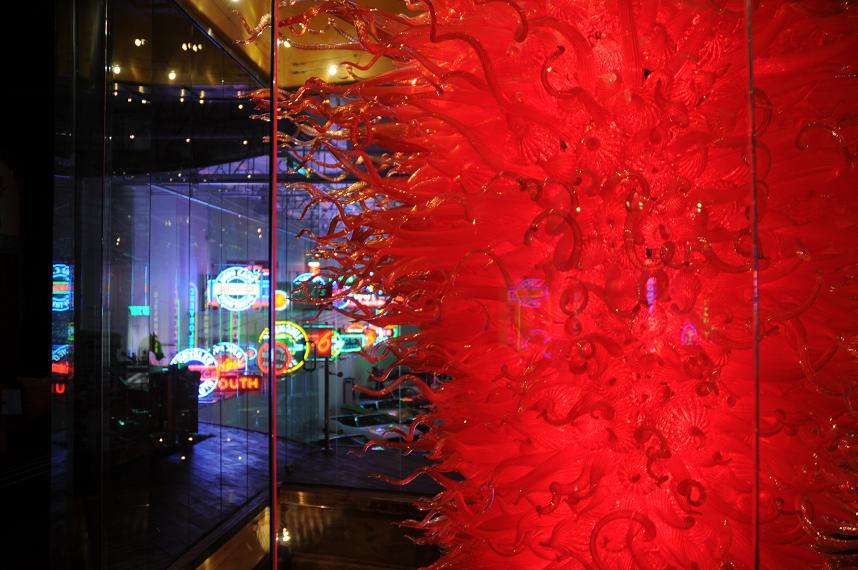Fiber artist Tarja Cockell has always identified as being a hands-on artist. Originally from Finland, her work reflects the simplicity often found in Scandinavian designs, which she applies to creating functional accessories and wall art.
Cockell’s interest in weaving began after taking a basic course while living overseas — and she was hooked. “I decided to study weaving and design. After graduating I worked as a weaving teacher in my native country of Finland. I also had my studio, where I made custom woven textiles for interiors.”
 With a degree textiles and design, majoring in weaving, when she first moved to the United States Cockell did not work on her weaving for a while. She tried her hand with other textile mediums, such as dying with different Shibori methods. “I found myself too far away from any weaving and decided to incorporate a combination of dyeing and other techniques into a weaving format to create some of the more complex techniques that I use today with multilayers,” she explained.
With a degree textiles and design, majoring in weaving, when she first moved to the United States Cockell did not work on her weaving for a while. She tried her hand with other textile mediums, such as dying with different Shibori methods. “I found myself too far away from any weaving and decided to incorporate a combination of dyeing and other techniques into a weaving format to create some of the more complex techniques that I use today with multilayers,” she explained.
Armed with a desire to set up a new studio in the U.S., Cockell found some studio space inside an old mill where she could set up her loom and start weaving again. Her studio can be found inside Western Avenue Studios in Lowell, Mass., a three-building, five-acre complex which hosts several hundred work-only studios, fifty live/work lofts, and a cooperative artist-run gallery, The Loading Dock Gallery. “It is an inspiring place for both artists and the public,” Cockell commented. “There are artists working in all mediums. We have open studios for the public every first Saturday of the month.”
For the past eight years, Cockell has been creating her art full-time. “I like the process of weaving and the unique textures it creates, but it has its limitations,” she said. “Weaving is very structural. I want my work to have a more ‘painterly’ sensibility and that is why I often paint my warps or use the Shibori dyeing method to create my work.”
Cockell enjoys the process of developing the initial design in each of her works of art as well as putting her ideas to practice. “Before I get to the actual creative part of the process I do a lot of preparation work. For my silk collages I dye all the materials at first and for the weaving I have to plan the warp and set up the loom,” she said. At this time Cockell is interested in working more with her dimensional weavings and often applies different techniques to her work. She explained: “I often work with layers, which gives an extra dimension to my work.” As an example, Cocknell weaves transparent linen to the top layer which is painted with simplified motifs. Next, she creates a layer underneath with applique and stitching.
“When those two layers merge together the image comes to life and that is the exciting part of the process. My choice of a subtle color palette is very typical in my work. I am intrigued by the shapes and the interplay of light and shadows,” Cockell said, adding her themes are typically not overly complex. However, designing around simple motifs does not equate to an accelerated finish time for her projects because weaving is the most time-consuming aspect of her work. “It takes planning and many steps to prepare before you actually get to weaving part,” she added.
When asked if she would explore other art mediums in the future, Cockell commented her work will always be textile related, whether it is in technique or use of materials. Her latest textural pieces could be interpreted as more of a mixed media type of art.
Facing challenges not unknown to many artists, Cockell finds that marketing her work and figuring out new avenues to sell her work is the most challenging facet of being an artist. “My work sometimes falls into a niche that is complex to explain and hard to categorize,” she articulated. “I strive to find balance between making my art pieces and my more functional items, such as scarves and home accessories.”
Cockell began selling her handcrafted wares at art shows and festivals in 2009 because she wanted to get out in the market, show her work, and build up a customer base. She also appreciates the feedback she receives while at shows. “I do get a lot of compliments, especially for my woven three-dimensional pieces. There is also a curiosity factor, because the work is seen from different points of view and it changes” she told.
The talented fiber arts artist stated she is a juried member of the League of NH Craftsmen, and shows her work at their annual fair in Mount Sunapee Resort in Newbury, N.H. This particular fair is one of her favorites due to its nine-day length, and she enjoys the atmosphere, and says the public is genuinely interested in her work. Like participating in many other art and craft shows and festivals, Cockell often makes connections with galleries and other opportunities beyond the show itself.

